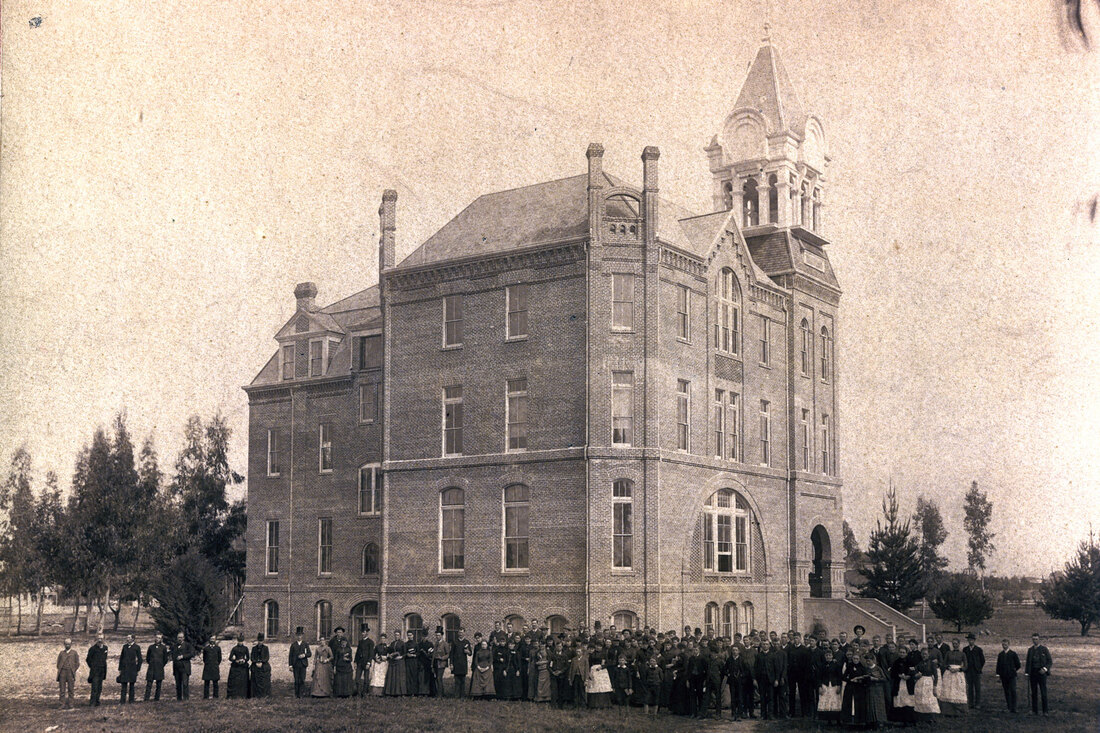|
Our client, a Class III medical device company, was issued an FDA 483 warning letter due to product field failures and QMS issues posing life threatening risks to implant patients. The Square-1 Engineering subject matter experts (SME team) were brought in to identify & correct systems and process issues across six (6) functional departments and two (2) manufacturing locations domestically. As you can guess our clients’ situation was dire due to several implant failures in the field. We invite you to download the case study below to learn how we saved our client $4.5M while successfully concluding the remediation project.
0 Comments
[This article is also featured on episode 72 of the Business Wingmen Podcast Show] Successful performance is everything! Our ability to execute at work is something we as professionals need to strive towards every day, yet many of our colleagues seem to have forgotten this time-tested reality of business. As Rory Vaden, bestselling business author and leadership speaker, accurately shares, “success is not owned, it is rented - and that rent is due everyday.” Vaden hits on a key piece which would serve all of us well to keep in mind as we come to work - our ability to successfully perform our job is what keeps us gainfully employed. I’ll take it a step further, what got us the job was our credentials, the things we’ve done in the past. What keeps us in the job thereafter is 100% our ability to get things done – the things that matter to the company and our respective performance. The same is certainly true in the consulting world, frankly I would argue it’s even more focused on performance and execution than a normal 8-5 full-time job is. The world of consulting can be summed up in 3 words: execute, execute, execute! Anything less and you’ve missed the mark. Consultants, like many of our fully employed brethren, has a tendency to forget the reason they are there, the reason they have a job – it’s to fix, solve and solution other peoples’ problems. Our inability to do this will inevitably lead to a consultant, or consulting firm, finding themselves unemployed or not getting asked back to continue supporting their customers. It’s for these reasons we need to employ the below five ‘best practices’ in our daily work. Your ability to do so will do two things – help keep you focused on what matters (successful execution of your task or job) while separating yourself from the competition and or your colleagues. Best Practice #1 – Proactive Communication If you’ve ever had some one say to you, especially someone in management, “can you give me an update on where you’re at with X”, you’ve just failed the first lesson of communication. Professionals who operate at a high level understand the importance of fluid and consistent communication. They know it’s important to communicate proactively, ahead of time. They don’t wait until the last minute to spring an urgent matter on the team or their boss, they don’t procrastinate, and they certainly don’t wait to inform those around them they are going to miss a deadline the day the deadline is due. Proactive communication is all about respecting the process and those around you. Best Practice #2 – Positive Mindset The beautiful thing about the way our minds work is we have an incredible amount of power over most of what happens in our heads. In particular, our outlook on things, our attitude, is 100% within our control. If we show up to work with a bad attitude, closed to others ideas, not welcoming feedback and or unwilling to collaborate with others we quickly will build a reputation as a person on the fringes. There’s no quicker way to alienate oneself from a team or your boss than by having a poor attitude. Yes, we all have our bad days – it happens even to the best of us. What’s important is to have your moment and then move on. Focus on what you can control and be open to ideas, different approaches and perspectives. An open and positive mindset is contagious causing your colleagues to feel invigorated working with those of us who can come to the table and leave the sourness at the door. Positive thinking also boosts our health by reducing stress! Best Practice #3 – Ownership We don’t need to be in management or the owner of a company to operate in a capacity of owning our work. Those of us who employ ‘ownership’ in our work don’t make excuses for shortcomings, we don’t worry about excuses because we’re busy finding solutions. When we own our work we don’t wait to be told what to do, we seek work proactively and or ways to improve things around us. People who operate with an ownership mentality have a tendency of being able to make decisions quicker while experiencing success more often. If you’ve ever said “that isn’t a part of my job description” you just failed the ownership best practice. People who own their work get promoted more, are typically paid higher wages and increasingly get called back to help with projects. They take responsibility for how they show up and encourage others around them to do the same. Of all the best practices listed in this article it is my humble opinion the practice of owning ones work and being accountable for it carries with it the biggest positive impact on our jobs. Best Practice #4 – Accessibility In the dawn of everyone working from home these days, or remotely, being able to get a hold of someone during normal working hours is critical. Simply put – if your boss has to track you down every time they need to reach you it probably isn’t going to end well for you in that job. Same is true if your company uses communication tools like Slack or Microsoft Teams. These tools are used to improve communication amongst the team, if you aren’t logged into the tool and or are unresponsive, you’re setting yourself up for a quick career death in your job. This doesn’t mean you need to be chained to your desk or phone eagerly awaiting the next hopeful call by a colleague or boss. What it does mean is that you need to be mindful of the various ways in which your company communicates and be attentive to those processes. If people feel like its easy to get in touch with you and or you respond quickly, they will invariably feel you are on top of things and are a reliable person to work with. For example, our company practices the ‘1/24 rule’ during standard business hours. We expect our teammates to acknowledge a communication with a response within an hour and provide an answer, or what to expect next within 24 hours. We aren’t perfect at this down to the minute (as that would be unrealistic) but I’ll be the first to say this practice makes our teammates highly proficient and therefore their jobs easier. Best Practice #5 – Systems & Tools Whether you’re a consultant, an employee or just new to your job, in today’s world there’s no excuse for not learning a company’s procedures, systems and tools. Those of us who choose not to work within these parameters typically find ourselves making careless mistakes, coming up short on our projects and irritating the heck out of our colleagues and management. Why is this? Well, when we don’t use a tool right, or don’t follow a certain SOP accurately it inevitably makes more work for someone else down the road. Trust me when I say every one hates having to fix other people’s inaccuracies, especially when it’s documentation related. If you’re new to a company do everything you can to quickly spool up by learning the tools, systems, workflows and documentation processes. The quicker you learn it the better your work product and output will be. People may just like working with you better as a result. Conclusion While there are many things which lead to someone being successful in their line of work, I firmly believe these five best practices are things all professionals can do, regardless of their experience, education level, etc. We have a choice to make every day when we show up to work – be the best at what we do or simply be average. As the job market continues to tighten up those of us who are average will find themselves unemployed far more frequently than those of us who choose to operate at a high frequency. It’s a choice – do you have what it takes? Like many things in life there is often more than one way to accomplish a task. This is especially true for those of us who fall in the creative space. One persons’ approach in the creative development process (drawing, painting, product design, coding, graphical design, underwater basket weaving, etc.) could be quite different from the person sitting next to them yet it’s possible for both people to arrive at the same destination.
Or so we think. I recently sat down with a good friend of mine, Tim Humphrey, who I’ve had the pleasure working with for several years teaming up to facilitate a variety of product design and drafting projects in the medical device arena. During our discussion I shared with Tim a frustration I had, and still have, having to do with inconsistencies in people’s design approach. I see this often in product development where the approach one person takes to design a product may on the surface get them to the desired finish line but as a result of their approach it leads to a plethora of unnecessary challenges down the road. As Tim laughed at me lightheartedly, we found ourselves diving deep into a discussion where in one conversation I found myself both highly intrigued while equally confused and somewhat baffled at the same time. Here’s the issue as I see it specific to designing in a product development scenario. Issue: someone is tasked with designing either a product, sub-assembly or component of a new or existing product. As such, their design approach gets the company to a conclusion where the design is technically complete allowing the person facilitating the work to check their proverbial work box and move on to the next assignment. While the work may have technically been completed, it often is done in a fashion which causes all sort of problems down the road for the company, including other employees working on the same project within the same organization as well as their external suppliers. How is it someone can complete a design project satisfactory on the surface yet problems arise down the road with that very same design which had been previously approved? Answer: the devil is in the details, or lack thereof, to be more specific. Tim and I both agreed on the following. The reason why companies and or their respective employees experience this is because they aren’t following a formal and documented ‘gold standard’ for their design practices. Simply put, they lack discipline with design fundamentals. They don’t have GOLD! There is also something to be said about training. If your company lacks proper training to ensure the standards are being followed that too can produce similar unwanted results. As a result of a lack of design standards and training employees are left to decide for themselves how to complete a task which may get them to the finish line but the approach, process and details along the way can have wild variances and interpretations. While this may be common place and old news to many of you reading this article, the reality is the actual practice of designing a product with repeatable ‘gold standards’ is anything but common sense or consistent in the workplace. When our approach to design is fast and loose we experience the following:
When these issues show up it causes companies to reinvest dollars and resources into their work in order to move the project forward to get it to a point of where it can be properly advanced along the product development life cycle. This reinvestment is unnecessary and a huge time suck. For these reasons its vital companies implement a gold standard which their employees and suppliers follow to ensure the work each party is facilitating makes it to the finish line in the same format, intent and approach. This unification of process increases the likelihood design work is done correctly while also ensuring future usage of said designs doesn’t require additional unnecessary iterations or complete redesigns. Does your company need to implement a ‘gold standard’ for your design and product development practices? Implementing a gold standard includes:
Key Takeaway: If you and or your company lacks a gold standard for your product design efforts you are inevitably wasting time and resources. This also has a direct correlation to a suppliers’ ability to help with outsourced work causing the overall project to be more challenging and lengthy than necessary (prototyping, manufacturing, etc.) Action Item: Got GOLD? Start right away implementing your gold standards starting with develop a best practice plan. From there setup a review plan to provide feedback on all work performed. Once infrastructure of your new gold standard system is established you’ll want to asses the skills of your team and develop a training program which can be offered to both new and existing employees. When talking with a customer about their project support needs, do you use a formalized approach or do you just wing it?
Interestingly enough, I was amazed to learn recently that the vast majority of consultants (including solopreneurs) don’t utilize a formal process for collecting information when talking with a customer about a project. As I began asking more questions I learned that this was a habit across the board, regardless of the amount of years of experience the consultant has in business and or their consulting practice. The conservative side of me wanted to run for the hills hearing this. Working as a consultant offers a lot of flexibility, however within this flexibility comes lots of room for alternative view points, ambiguity and of course misinterpretation. When things are loosey goosey we open ourselves up for further opportunity for projects to fail, missing the mark or leaving one or both parties with a sour taste in their mouths at the end of the project. One of the best things I learned early in my career from a more experienced person I worked with was the importance of being disciplined in using a standardized system of help in the information gathering discussions when talking with clients. Why? Because if you don’t it’s amazing how quickly people can interpret things differently than what we had assessed, thought or even heard. What’s worse, is a simple misunderstanding up front at the beginning of a project or relationship can boil up to big issues down the road, including legal actions. For these reasons I use, and always suggest consultants use, a formal process for evaluating, qualifying or assessing project opportunities with customers. This meeting or discussion between supplier (consultant) and customer can be referred to as an ‘intake meeting’, ‘scoping a project’, ‘project qualification’ or ‘project discovery’. They’re all designed to do the same thing – ask questions to obtain information. When you’re in a discussion with a customer about their project needs you’re really trying to figure out one thing – is this the right project/ business opportunity for me to take on? The answer to that question is buried in a flurry of Q&A, best served up using a formal approach where we learn about our customers’ needs, thoughts, feelings and desires for the project and work ahead. Creating a project qualification process document (SOP) before you begin discussing projects with customers ensures you will gather all the information upfront in a consistent manner. This will also lessen the likelihood of you having to go back to ask the customer for foundational questions to better understand the project. Here’s some good questions you could use in your project qualification discussions to determine if this is the right work to take on and customer to work with:
Keep qualification discussions to no more than 30 minutes if possible. As a consultant your most precious asset is your time. All to often customers will spend time talking about things that have nothing to do with the project and or work they’re requesting your help with. Set the tone at the beginning of the discussion indicating you have 30 minutes to talk through their project needs, then moderate the discussion from there on out. Think like a consultant – not an employee. Employees have to do the work their employer asks of them, this is not true as a consultant. Your job is to listen and provide feedback. If what the customer is asking for doesn’t add up or isn’t feasible it’s your job to guide them to an alternative solution and or walk away from the opportunity. Consultants advise and perform the work as an SME. Be wary of situations where customers are asking you to perform a miracle. Projects must be grounded in reality, otherwise you may end up as the one to blame. As you wade through the project qualification discussion with your customer it’s advisable to be on the look out for the following challenges:
As you begin to formulate your approach to these discussions and questions it’s highly advisable to jot it down on paper, creating a template or checklist you can use each and every time. Should you get through the project qualification stage and both you and customer are interested in moving forward to the next stage make sure you put everything in writing that was covered during the qualification discussion. Be specific and direct. Your Statement of Work (SOW) is the backbone of your project and incredibly important in outlining expectations, performance and what happens if changes need to take place during the project. Key Take Away: As a consultant your most precious asset is your time. Use a formal and formatted approach to your project qualification discussions with your customers to ensure you collect the right information up front to better determine if the project in question is the right opportunity for you. Can you deliver the goods inline with the customers expectations? Action Item: Create a project qualification template or scoring matrix to use in your customer discussions to obtain all the information needed up front for the project. This removes all the guess work. Your template should include both exploratory questions to get your customer talking and sharing with you the in’s and out’s of the situation while also simple ‘yes’ and ‘no’ questions like “is this project approved?. Once you’ve completed the discussion with your client tell them you will get back to them after you’ve had an opportunity to digest the information you gathered. This will give you time to allow the information to sink in, time provides perspective. Sometimes a scoring matrix can be really beneficial in this situations especially if you have multiple project opportunities with multiple customers because it allows you to objectively rank each project opportunity against one another. Pick the best or most lucrative projects and say adios to the others. About the AuthorTravis Smith is the founder and managing director of Square-1 Engineering, a medical device consulting firm, providing end to end engineering and compliance services. He successfully served the life sciences marketplace in SoCal for over 15 years and has been recognized as a ‘40 Under 40’ honoree by the Greater Irvine Chamber of Commerce as a top leader in Orange County, CA. Categories
All
Archives
July 2024
|
||||||
Visit Square-1's
|
|







 RSS Feed
RSS Feed


